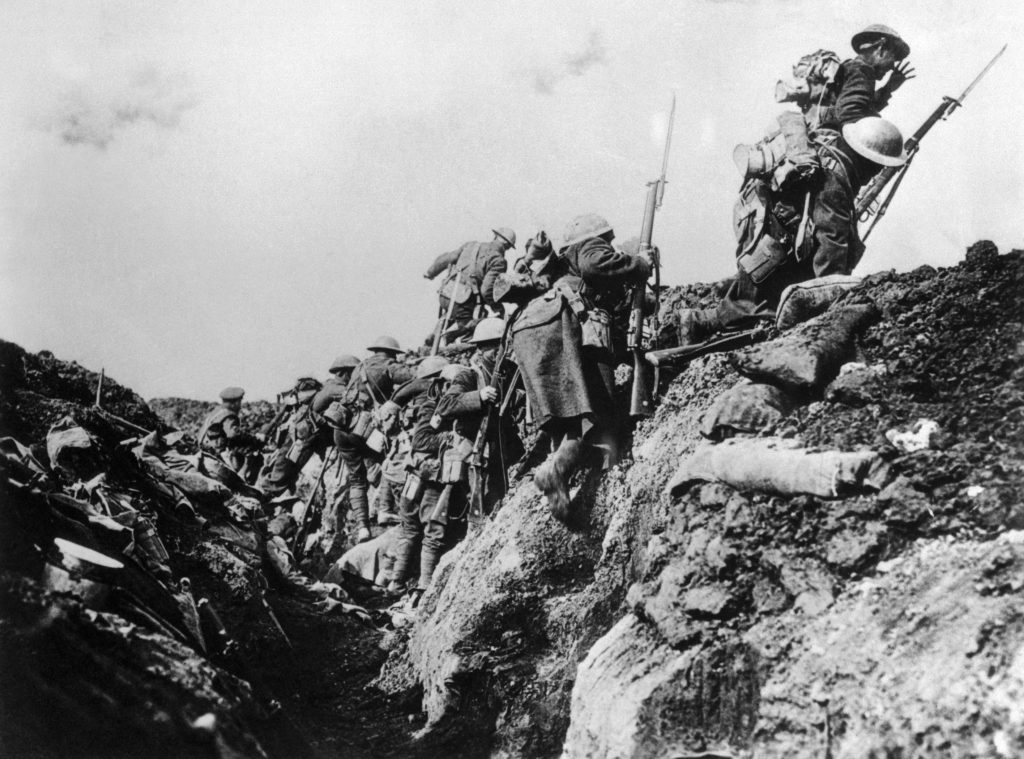Hand-to-Hand Fighting Methods of World War I: British, Canadian, French, and American Forces

World War I witnessed a variety of combat methods, ranging from large-scale artillery barrages to trench warfare. In addition to these tactics, hand-to-hand combat played a significant role on the battlefield. This article will explore the hand-to-hand fighting methods employed by the British, Canadian, French, and American forces during World War I, shedding light on their training, techniques, and the challenges they faced.
British Army
The British Army placed great emphasis on bayonet training and close-quarters combat. Soldiers were trained to engage in fierce bayonet charges, a tactic that became a symbol of British resolve on the battlefield. The Manual of Bayonet Training, published in 1913, provided detailed instructions on using the bayonet effectively in hand-to-hand combat. Soldiers were taught to thrust, parry, and butt-strike with their rifles, as well as to employ various wrestling techniques to overpower opponents.
Methods Of Unarmed Attack And Defence
The manual covers a wide range of hand-to-hand fighting techniques, including holds, blows, kicks, defence against knife attacks, defence against rifle and bayonet attack, special techniques for military police, and methods of carrying the wounded. There is even advice on using the standard issue steel helmet as a weapon. The manual was intended for use by both raw recruits and more hardened soldiers who might already have experienced similar situations in the trenches of the Western Front. The manual is very well illustrated throughout with numerous excellent line drawings of the various combat situations that might be encountered, and the fighting techniques that should be deployed. Is broken into 3 distinct sections
PART I—Simple methods of unarmed attack and defence, which can be taught to all recruits
PART II—More advanced methods for trained soldiers.
PART III—Special methods for military police
Sources
Bayonet Training: Manual for the British Army (1916) https://www.naval-military-press.com/product/bayonet-training-1918/
Methods Of Unarmed Attack And Defence (General Staff, June, 1917)
Fighting Fit 1914 https://www.amazon.co.uk/Fighting-Fit-1914-Adam-Culling/dp/1445637596
Canadian Military
Canadian troops in World War I were known for their tenacity and combat skills. Like their British counterparts, they received extensive bayonet training. The Canadians developed a reputation for their “Vickers Trench Raiding Parties,” which involved small groups of soldiers infiltrating enemy trenches and engaging in close-quarters combat. Their hand-to-hand techniques included bayonet fighting, clubbing with entrenching tools, and the use of specially designed trench knives.
Major Percy Hobbs of the Canadian army who wrote:
“After a bayonet attack, in nine cases out of ten (trench or open) the men grapple. The man who has never been there before, so to speak, doesn’t know what to do. He has been shown and practiced in shortening arms and jabbing and dropping his arms and disarming the other fellow, and a lot of counters and tricks. Well your average trained men tie themselves up in a knot and roll about on grass and forget everything”
Captain William J Jacomb of the Canadian army to put together a special training programme for soldiers that integrated boxing and bayonet fighting. Firmly believing that this would give allied soldiers that much needed “edge” when it came to close quarter combat. According to Jacomb “bayonet fighting is so near akin to boxing that the practice of boxing develops skill in bayonet in less time, with less expense, and with fewer casualties.”
Sources
Bayonet Training 1916 https://wartimecanada.ca/sites/default/files/documents/Bayonet%20training%201916.pdf
Bomber Training – Grenades in Trench Warfare
https://wartimecanada.ca/sites/default/files/documents/Bombers%27%20Training_0.pdf
The French
The French Army faced some of the most brutal hand-to-hand combat of World War I, particularly during the intense trench warfare on the Western Front. Their training focused on the efficient use of the bayonet, combined with grenade throwing and hand-to-hand combat techniques. French soldiers were adept at engaging in quick, close-range fighting, relying on agility and surprise to gain the upper hand.
The French utilized the martial art of Savate during World War I. Savate, also known as French kickboxing, played a role in hand-to-hand combat training for French soldiers during the war. Savate techniques focused on kicks, punches, and footwork, making it a valuable skill in close-quarters combat.
The French military incorporated elements of Savate into their hand-to-hand combat training programs to enhance the soldiers’ ability to defend themselves and engage in hand-to-hand combat effectively. However, it’s important to note that while Savate techniques were included in training, the primary emphasis was still on the use of bayonets, grenades, and other traditional weapons.
Savate provided French soldiers with an additional set of skills that complemented their training in other combat techniques. The agile footwork and striking techniques of Savate allowed soldiers to maintain balance and strike effectively while engaged in close-range combat.
Sources
Hand to Hand French combat techniques of WW1 Translated
American Forces
As the United States entered the war in 1917, American troops had to quickly adapt to the realities of hand-to-hand combat. American soldiers received training in bayonet techniques, hand-to-hand combat, and knife fighting. They were encouraged to utilize their physical strength and aggression in close-quarters encounters, often combining wrestling manoeuvres with bayonet thrusts.
The Americans also began to experiment with teaching jiu jitsu to their fighting men from around 1916, but the primary focus of their hand-to-hand combat training for their troops remained on Western boxing and wrestling.
Sources
HAND-TO-HAND FIGHTING A System Of Personal Defence For The Soldier (1918) A.E Marriott
https://www.naval-military-press.com/product/hand-to-hand-fightinga-system-of-personal-defence-for-the-soldier-1918/
Hand-to-hand combat played a crucial role in World War I, with British, Canadian, French, and American forces employing various techniques and strategies. The bayonet was a primary weapon in close-quarters fighting, accompanied by the use of entrenching tools, trench knives, and wrestling manoeuvres. By understanding the hand-to-hand fighting methods employed by these forces, we gain insight into the challenging and brutal nature of warfare during this pivotal conflict.
< BACK